Wednesday Oct. 25, 2006
Optional Assignments #4 and #5 were collected today.
Answers to the Assignment #5 questions will be distributed in class on
Friday. Answers to the Controls of Temperature assignment will
appear online (that material won't be covered on the next quiz)
The Atmospheric Stability worksheet has been graded and was returned in
class. There is a link on the class homepage where you can check
to on how the 1S1P Assignment #2 report
grading is progressing.
The Quiz #3 Study Guide has been updated
and is now nearly finished (there may not be any additional changes
made)
Some reading has been assigned from
Chapter 5.
Today (and
Friday) we will be learning how clouds make precipitation. It's
not as easy as you might think.
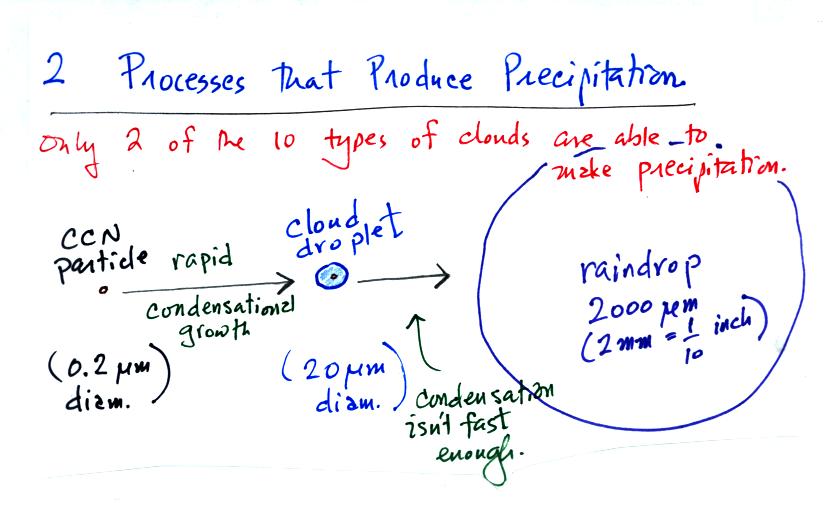
This figure shows typical sizes of cloud
condensation nuclei (CCN), cloud droplets, and raindrops. As we
saw in the cloud in a bottle demonstration it is relatively easy to
make cloud droplets. You raise the RH to 100% and water vapor
condenses pretty much instantaneously onto a cloud condensation nucleus
to form a cloud droplet. It
would take much longer (days) for condensation to turn a cloud droplet
into a
raindrop. Part of the problem is that it takes about 1 million
cloud droplets of water to make a raindrop.
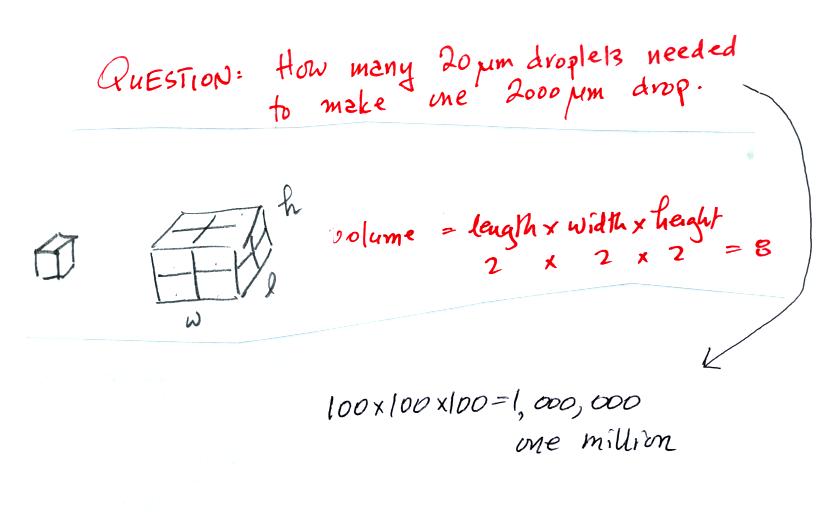
A raindrop is about 100 times bigger across than a cloud droplet.
You must remember that volume depends on length x width x height.
So a 2000 micrometer diameter raindrop contains 1 million times as much
volume as a 20 micrometer diameter droplet.
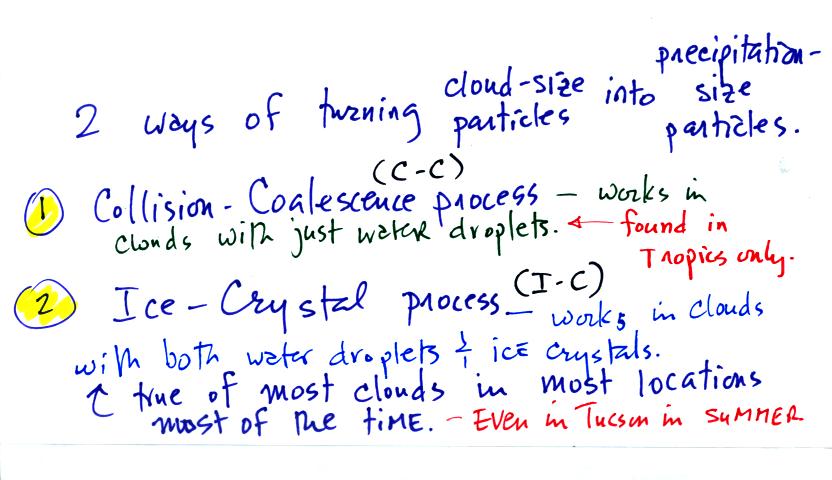
There are two processes capable of quickly producing
precipitation
sized particles in a cloud.
The collision coalescence process works in clouds that are
composed on water droplets only. Clouds like this are found in
the tropics. We'll see that this is a pretty easy process to
understand.
The ice crystal process produces precipitation everywhere else.
This is the process that makes rain in
Tucson, even in the hottest part of the summer.
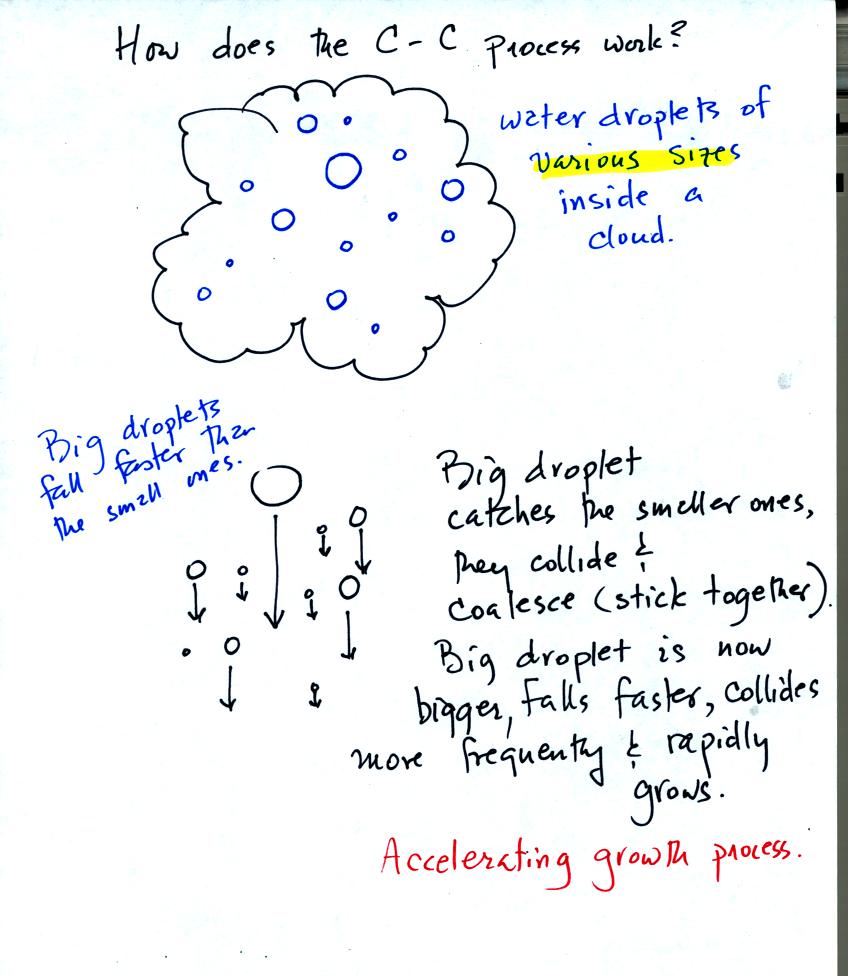
The collision coalescence process works best in a cloud
filled with cloud droplets of different sizes. As we saw in a
short video the larger droplets fall
faster than the small droplets. The large droplets overtake and
collide with the smaller ones. The droplets then stick together and
form any even larger droplet that will fall faster than before and
sweep out a larger volume. In this accelerating growth process an
above averaged sized droplet can
quickly turn into a raindrop.
The raindrops that fall from nimbostratus clouds tend to be
smaller
than the raindrops that fall from cumulonimbus clouds. The
growing raindrops don't spend as much time in the Ns cloud because the
cloud is thin and the updrafts are weak.
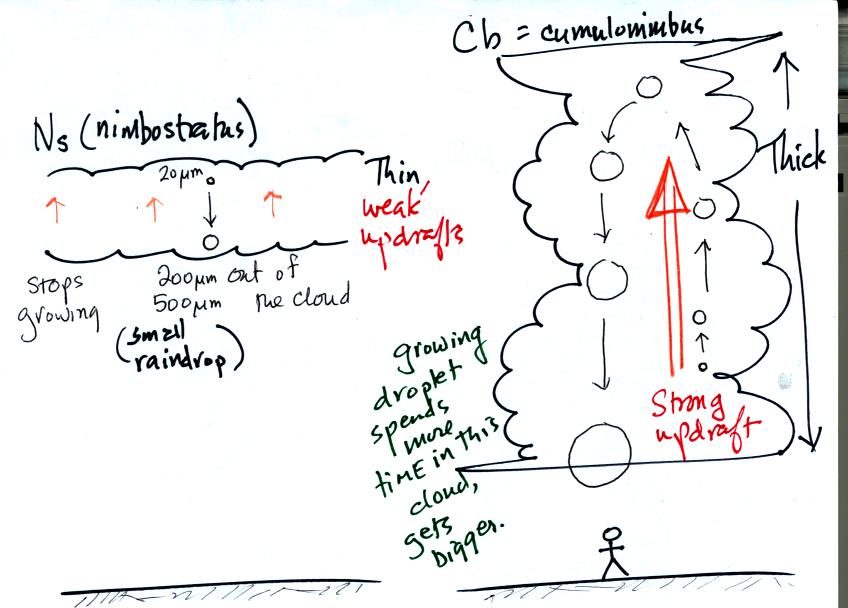
So how big can the raindrops that fall from cumulonimbus clouds
get?
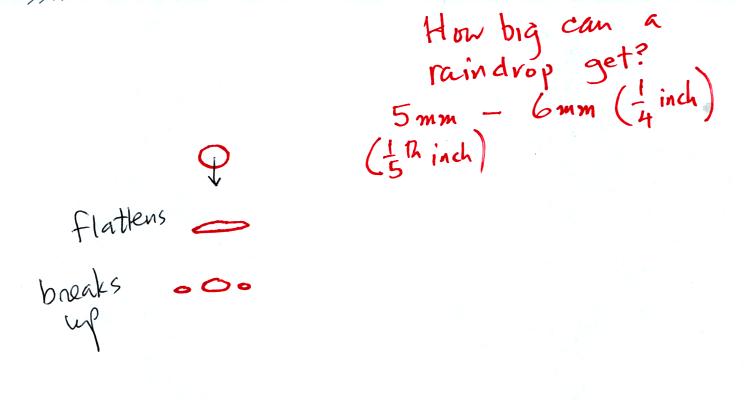
The
wind resistance that a large drop encounters as it falls through a
cloud causes it to flatten out, start to flop around or wiggle, and
eventually break into smaller pieces. The biggest raindrops are
about 1/4 inch across.
You may have noticed a few what seem to be very large raindrops hitting
the ground with an impressive splot at the beginning of a summer
thunderstorm. The figure below is one
explanation of this phenomenon.
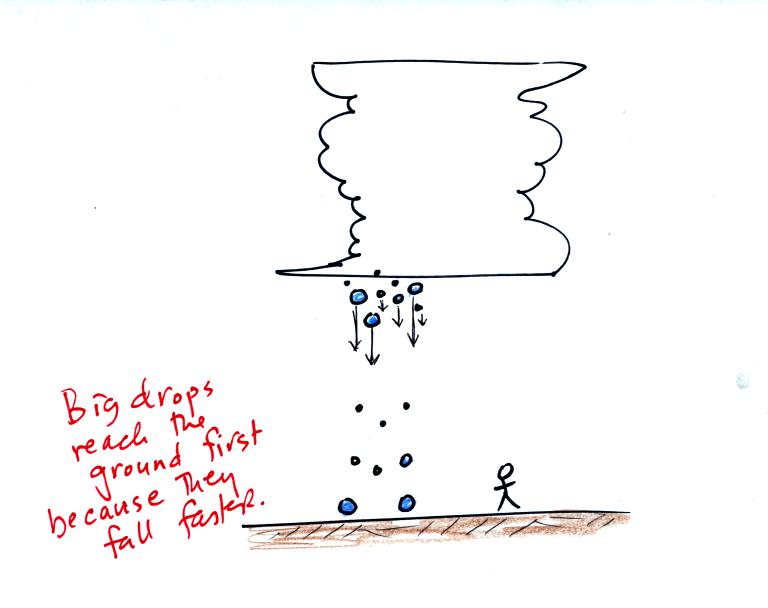
Before
learning about the ice-crystal process we need to know something about
the structure of cold clouds (clouds that contain both water droplets
and ice crystals).
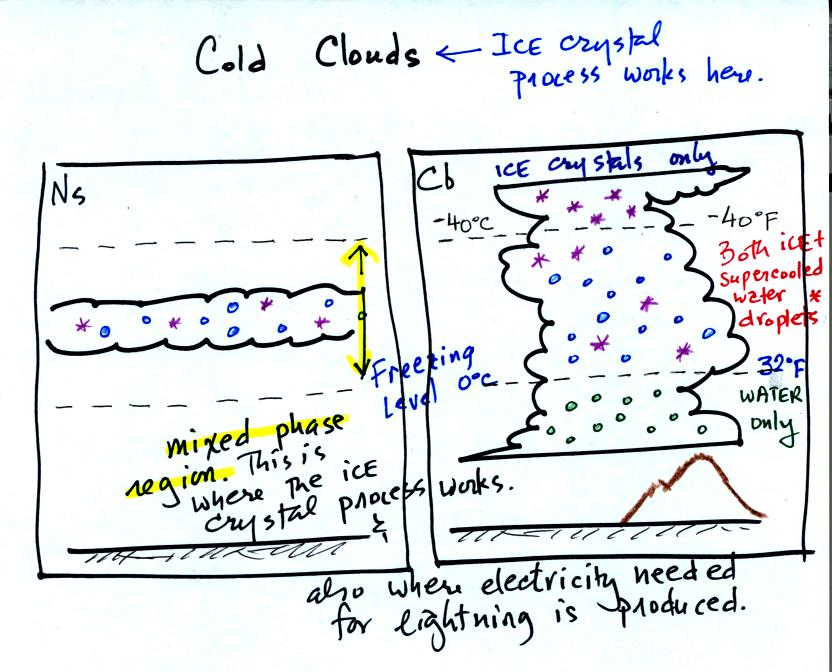
The top of the thunderstorm is so cold that there are just ice crystals
there. The bottom is warm enough to just contain water
droplets. The interesting part of the thunderstorm and the
nimbostratus cloud is the part that contains both supercooled water
droplets (water that has
been cooled to below freezing but hasn't frozen) and ice
crystals.
This is called the mixed phase
region. This is where the ice crystal process will produce
precipitation. This is also where the electrical charge that
results in lightning is generated.
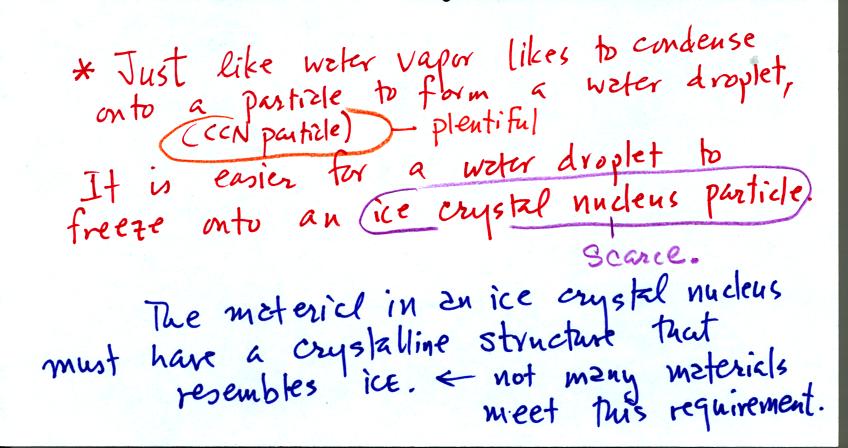
The supercooled water droplets aren't able to freeze even though they
have been cooled below freezing. This is because it is much
easier for small droplets of water to freeze onto an ice crystal
nucleus. Not just any material will work, the material must have
a crystalline structure that is like that of ice.








